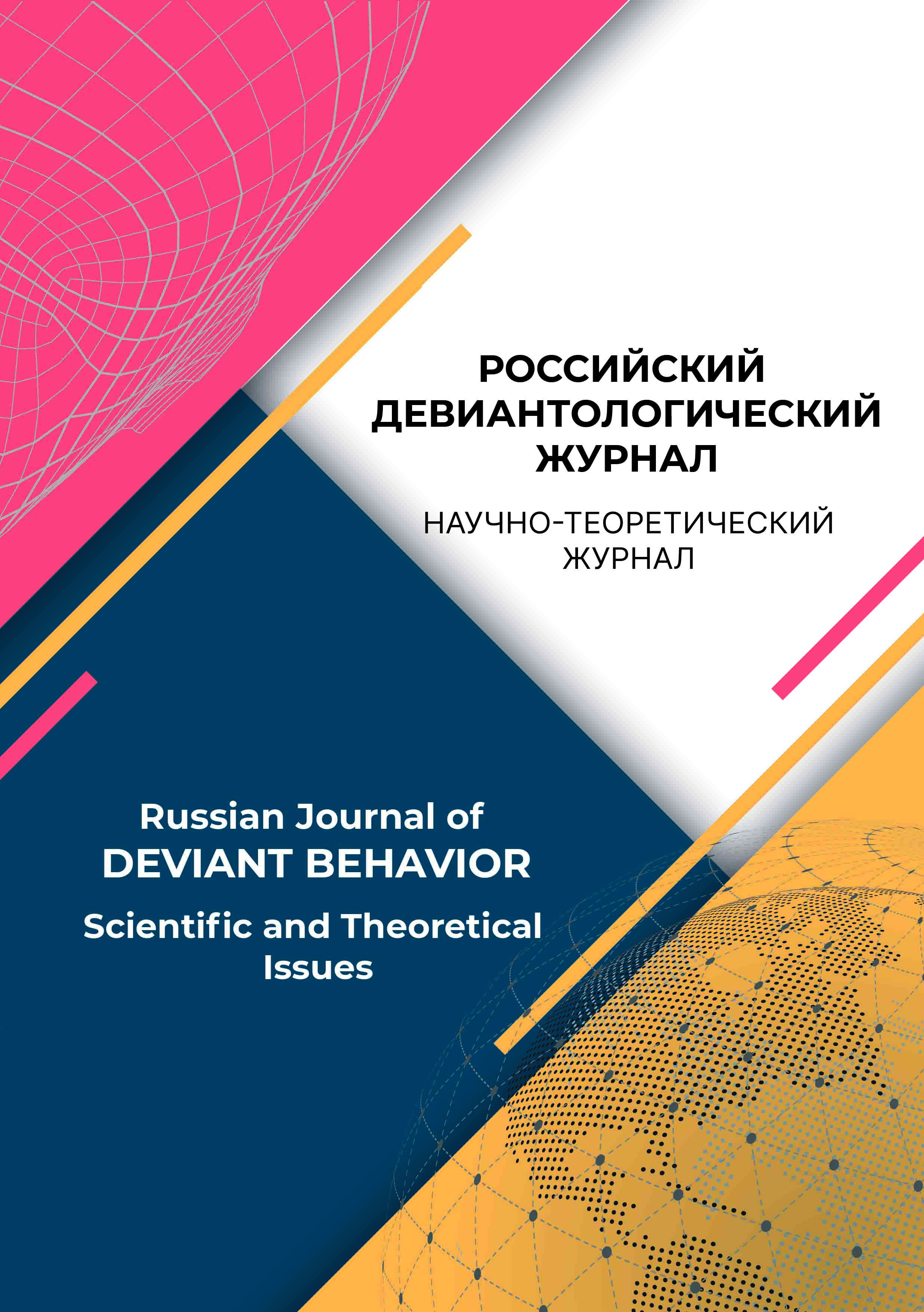Mogilev, Belarus
UDC 343.9.01
CSCSTI 00.00
Russian Classification of Professions by Education 40.00.00
Russian Library and Bibliographic Classification 67
Russian Trade and Bibliographic Classification 7
BISAC LAW LAW
The article reveals the important vector in criminological science by highlighting and studying gerontological crime as a rather autonomous criminogenic social reproduction phenomenon. The author offers the criminological analysis of gerontological crime by means of complex binary approach to its understanding in the view of semantic (critical) and traditional approaches, reveals the main trends of gerontological crime in the Republic of Belarus with regard to its level, dynamics and structure in order to forecast and prevent this type of crime. Introduction. Gerontological crime, or crime involving deviant behavior of older people in various spheres of human activity, is increasing in the majority of states today. This determines the relevance of its in-depth scientific criminological research in order to develop a modern, effective and comprehensive system of prevention. Objective. Development of the theoretical and applied aspects of criminological characteristics of gerontological crime. Research methodology, methods and techniques. The dialectical-materialistic method of scientific cognition, general scientific methods (analysis, synthesis, comparison etc.) as well as special methods (historical, logical, legal, sociological etc.) formed the methodological basis of the research. Results. The author’s definition of gerontological crime is refined, its main quantitative and qualitative indicators are analysed, trends are revealed and the main determinants are identified, making it possible to carry out preventive activities more effectively. Scientific novelty. The conclusions and proposals developed in the research significantly enrich the conceptual criminological apparatus, systematise and expand the scientific knowledge on gerontological crime. Fundamentally new in knowledge concerning gerontological crime is that it is examined as an object of social relations that predetermine and motivate the elderly to commit unlawful acts as a manifestation of their negative response to social needs not satisfied by the society. Practical significance. The results of the research are aimed at achieving and maintaining a maximum degree of protection of the interests of individuals, society and the state against gerontological crime and can be used to improve legislation, law enforcement activities of the various subjects of prevention of gerontological crime, which will create conditions for ensuring constitutional legality and the rule of law.
older persons, old age, gerontological crime, criminological indicators and trends, determinants
1. Antonyan, Yu. M., Volkova, T. N. (2005). Prestupnost’ starikov. Monografiya, 2-e izd., ispr. Ryazan’: Akademiya prava i upravleniya Federal’noj sluzhby ispolneniya nakazanij.
2. Bajbarin, A. A. (2009a). Pozhiloj vozrast poterpevshego ot prestupleniya. Nauchnye trudy Rossijskoj akademii yuridicheskih nauk, 9 (3), 385-389.
3. Bajbarin, A. A. (2009b). Ugolovno-pravovaya differenciaciya vozrasta: monografiya. Moskow: Vysshaya shkola.
4. Barsukova, O. V. (2003). Starcheskaya prestupnost’ i prestupleniya protiv lic pozhilogo vozrasta: kriminologicheskie i ugolovno-pravovye problemy: dis. … kand. yurid. nauk. Vladivostok.
5. Dolgova, A. I. (2003). Prestupnost’, ee organizovannost’ i kriminal’noe obshchestvo. Moskow: Rossijskaya kriminologicheskaya associaciya.
6. Kasimov, V. O. (2018). Vozrast prestupnika kak kriminologicheskaya problema: dis. … kand. yurid. nauk. Saratov.
7. Kudryavcev, V. N., Eminov, V. E. (2006). Prichiny prestupnosti v Rossii. Kriminologicheskij analiz. Moskow: Norma.
8. Luneev, V. V. (2007). Yuridicheskaya statistika. Moskow: Yurist.
9. Razumov, P. V. (2005). Kriminologicheskaya harakteristika gerontologicheskoj prestupnosti i mery ee preduprezhdeniya: dis. … kand. yurid. nauk. Stavropol’.
10. Temaev, T. V. (2005). Social’nyj kontekst gerontologicheskoj prestupnosti: dis. … kand. sociol. nauk. Saratov.
11. Shestakov, D. A. (2005). Shkola prestupnyh podsistem: (paradigma, otrasli, vliyanie vovne). Rossijskij kriminologicheskij vzglyad, 1, 45-53.
12. Homich, V. M. (2007). Kriminologicheskoe (kriticheskoe) ponimanie prestupnosti - metodologicheskaya osnova kriminologii pravoobrazovaniya. Zakonnost’ i pravoporyadok, 4, 21-27.
13. Blowers, A. N. (2015). Elders and the criminal justice system. Journal of Crime and Justice, 38 (1), 1-8. https://doi.org/10 .1080/0735648X.2014.931509
14. Blowers, A. N., & Doerner, J. K. (2015). Sentencing outcomes of the older prison population: an exploration of the age leniency argument. Journal of Crime and Justice, 38 (1), 58-76. https://doi.org/10.1080/0735648X.2013.822161
15. Lachs, M., Bachman, R., Williams, C., Kossack, A., Bove, C., & O’Leary, J. (2004). Older Adults as Crime Victims, Perpetrators, Witnesses, and Complainants: A Population-Based Study of Police Interactions. Journal of Elder Abuse and Neglect, 16 (4), 25-40. https://doi.org/10.1300/J084v16n04_02
16. Leeson, G. W. (2018). Global demographic change and grandparenthood. Contemporary Social Science, 13 (2), 145-158. https://doi.org/10.1080/21582041.2018.1433316
17. Policastro, C., Gainey, R., & Payne, B. K. (2015). Conceptualizing crimes against older persons: elder abuse, domestic violence, white-collar offending, or just regular old crime. Journal of Crime and Justice, 38 (1), 27-41. https://doi.or g/10.1080/0735648X.2013.767533
18. Snyder, D. R. (2014). Elder Crimes, Elder Justice. Burlington. MA: Jomes & Bartlett Learning.















